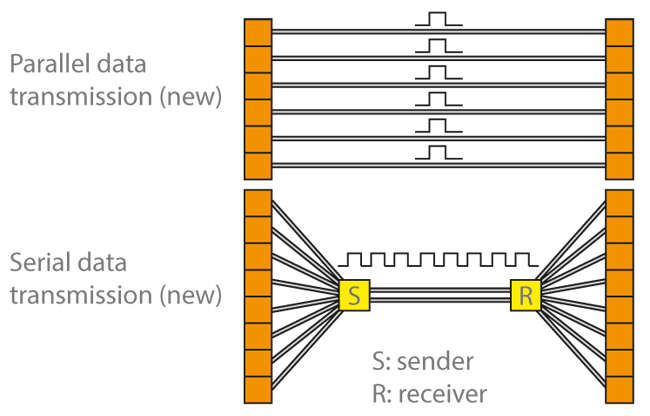Data transmission
Data transmission includes all methods that can be used to transmit information from a sender to a receiver. The process occurs when the sender varies a physical quantity (frequency, voltage) over time and this quantity is measured by the receiver. Transmission can be analog or digital.
The technical impossibility of shielding the message channel (physical quantity) from outside interference and measuring this physical quantity precisely eventually leads to a loss of data that also cannot be prevented through amplification.
See Fig. 1 Data transmission

Fig. 1 Data transmission: Parallel and serial data transmission (transmission rate in bits)
Types of data transmission
- Analog: Data is continually related to the physical quantity and values are permitted within a defined interval and are always relevant.
- Digital: Data is related to the physical quantity in binary form (values 0 and 1 are used). Multiple intervals that are not directly consecutive are permitted and are only relevant in specific time intervals that are also not directly consecutive. These intervals must not have any common elements.
Types of digital data transmission
- Serial: Data is transmitted in consecutive bits over a specific line.
- Parallel: Data is transmitted over several physical lines at the same time
